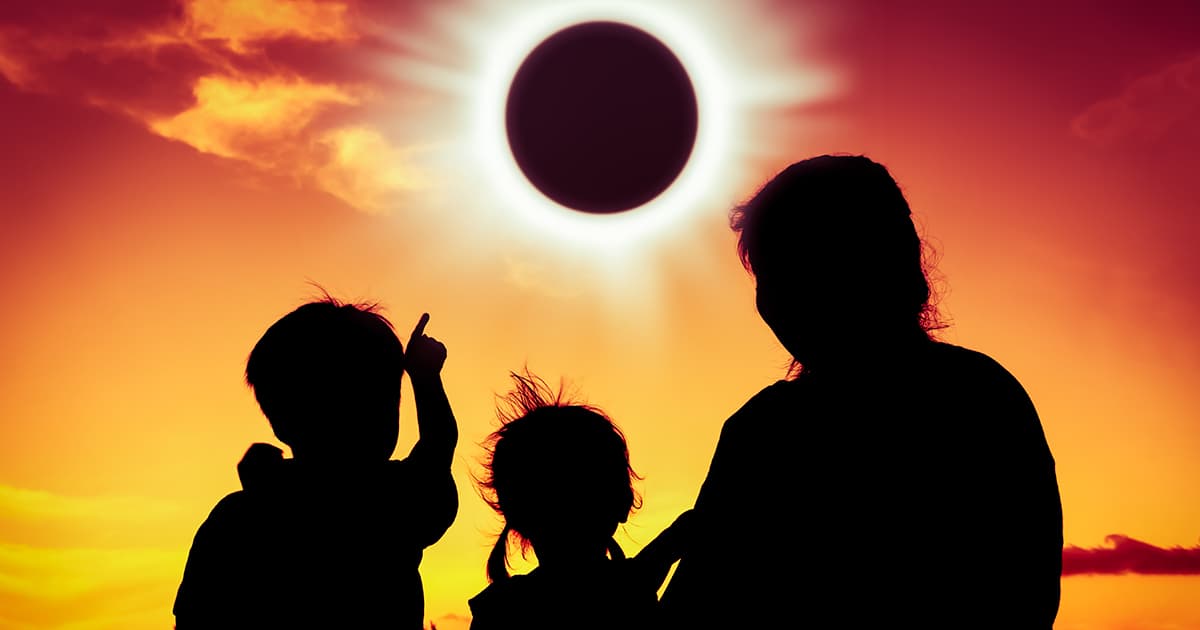What to Know About the Solar Eclipse in Canada

Today the moon passes between the Earth and sun, casting a shadow on Earth that either fully or partially blocks the sun. How much of the April 8, 2024, solar eclipse you will see depends on where you live in Canada and how much cloud cover there is.
The solar eclipse will take place in the skies over Canada, the United States, and Mexico, giving millions a chance to see skies temporarily darken or become dull as the moon moves in front of the sun.
What is a solar eclipse?
A solar eclipse happens when the moon comes between the Earth and the sun, casting a shadow on Earth.
A total solar eclipse is when the moon perfectly aligns with the Earth and sun, completely blocking out sunlight and causing darkness for a few minutes.
A partial solar eclipse is when the moon blocks only part of the sun because they are not perfectly aligned.
What will the solar eclipse look like?
In the total solar eclipse, the sky will look like it’s dawn or dusk and it will be slightly colder. The sun will look like a black disk with a glow around it.
Weather permitting, people along the path of totality (when the sun is completely blocked) will see the sun's corona, or outer atmosphere, which is usually hidden by the bright light from the sun's surface.
In a partial eclipse, the sky does not go dark and may be a bit dull.
How much of the eclipse you will see depends on where you live.
When was the last solar eclipse, total and partial in Canada?
There was a total solar eclipse on Feb. 26, 1979, which was seen in Saskatchewan, Manitoba, Ontario, Quebec, and Nunavut.
In 2017, Canadians saw a partial eclipse with Canada’s west coast seeing the most dramatic blockage of the sun. Several U.S. states saw a total eclipse.
How will we see the solar eclipse in Canada?
Today, the solar eclipse's path of totality will pass through parts of Ontario, Quebec, New Brunswick, Prince Edward Island, Nova Scotia, and Newfoundland and Labrador.
The Western Canadian provinces of Saskatchewan, Alberta, and British Columbia will see a partial eclipse. In Manitoba, a 70% solar eclipse will be visible. Some northern communities will get to see a partial eclipse, too.
Depending on your location in Canada, the total eclipse will be visible for just a few seconds to about 3.5 minutes near the centre of the path of totality. And also depending on your location, the solar eclipse will take place in the afternoon or early evening.
Where is the best place to see the total solar eclipse in Canada?
Niagara Falls, Ont., is expected to be a prime viewing location because it is nearly in the centre of the path of totality when the moon will completely block the sun's rays for about 3.5 minutes at 3:18 p.m. Eastern time, but the eclipse period will be between 2:04 and 4:32 p.m. Eastern.
The Niagara region has declared a pre-emptive state of emergency as officials have estimated that up to one million people could visit Niagara Falls to see the total eclipse.
What is the path of totality?
A solar eclipse path of totality is where the moon slides between the sun and Earth and blocks the sun 100%. The closer a viewer is to the center line of the path, the longer the eclipse lasts.
The length of totality can be anywhere from a few seconds to more than three minutes, depending on where the viewer is located along the path of totality.
The solar eclipse's path of totality will pass through some cities and towns in Ontario, Quebec, New Brunswick, Nova Scotia, Prince Edward Island and Newfoundland and they will be in darkness for a few minutes.
People outside the path of totality will be able to observe a partial solar eclipse, during which the sun is not hidden in totality.
How do I protect my eyes to look at the eclipse?
You'll need to wear eclipse glasses or similar protective eye gear, which meet international standards, to observe the eclipse or while aiming your camera at the eclipse. Sunglasses won’t provide sufficient protection.
According to NASA, looking directly at the sun without specialized eye protection is unsafe and this includes before and after totality.
NASA says it’s important to only view the eclipse with your eyes unprotected during the limited time that totality occurs in your location.
When is the next total solar eclipse?
The next total solar eclipse is in 2044, but it’s not expected to have as broad a reach as the 2024 eclipse.


.jpg?300x300)
